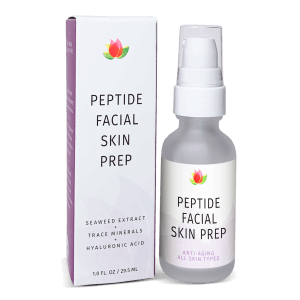Ingredients, Natural, Reviva Labs, Skin Care
Can Gluten Ingredients in Skincare Trigger Reactions?
When considering skincare, many individuals focus on ingredients like retinol, hyaluronic acid, or essential oils. However, gluten, a protein found in wheat, barley, and rye, has recently gained attention. Gluten-free diets have become popular due to gluten sensitivity and celiac disease, but does gluten in skincare products pose the same risks? This question is crucial for those with gluten-related disorders who might be concerned about their skincare choices.
Understanding Gluten Sensitivity and Celiac Disease
Gluten sensitivity and celiac disease are not the same. Celiac disease is an autoimmune disorder where ingestion of gluten leads to damage in the small intestine. According to the Celiac Disease Foundation, it affects about 1% of the population worldwide. On the other hand, gluten sensitivity, also known as non-celiac gluten sensitivity (NCGS), doesn’t cause intestinal damage but still triggers uncomfortable symptoms like bloating, fatigue, and headaches.
Can Gluten in Skincare Be Absorbed Through the Skin?
One major question is whether gluten can be absorbed through the skin and cause reactions in those with gluten sensitivity or celiac disease. The skin acts as a protective barrier, and for gluten to cause a systemic reaction, it would need to penetrate this barrier and enter the bloodstream. Current research indicates that gluten molecules are too large to be absorbed through the skin. Therefore, for most people with gluten-related disorders, topical application of gluten-containing products does not pose the same risk as ingestion.
Skin Reactions and Dermatitis Herpetiformis
Although gluten molecules are too large to penetrate the skin, topical application can still cause issues for those with a specific skin condition known as dermatitis herpetiformis (DH). DH is a chronic skin condition linked to celiac disease, characterized by itchy, blistering skin eruptions. For individuals with DH, even trace amounts of gluten can trigger a reaction. However, this reaction is typically due to ingestion rather than topical exposure. The link between topical gluten and DH reactions remains a topic of debate among experts.
Choosing Gluten-Free Skincare Products
Given the uncertainty, some individuals with gluten sensitivity or celiac disease opt for gluten-free skincare products as a precaution. This choice is more about peace of mind than a documented medical necessity. Many skincare brands now label their products as gluten-free, making it easier for consumers to identify suitable options. Reading ingredient labels is crucial, as gluten can appear in unexpected forms, such as hydrolyzed wheat protein or barley extract.
Statistics and Market Trends
The demand for gluten-free skincare products has grown significantly. According to a report by Grand View Research, the global gluten-free cosmetics market size was valued at USD 6.3 billion in 2019 and is expected to expand at a compound annual growth rate (CAGR) of 5.3% from 2020 to 2027. This statistic underscores the increasing consumer awareness and demand for gluten-free beauty products. Source.
Considerations for Gluten-Free Skincare
When selecting skincare products, it is essential to be aware of potential sources of gluten. Ingredients derived from wheat, barley, and rye are common in cosmetics and skincare formulations. Gluten-containing ingredients may be found in lotions, shampoos, and even lipsticks. While the likelihood of a reaction from topical gluten exposure is low for most individuals with gluten sensitivity or celiac disease, those with severe sensitivity or dermatitis herpetiformis should exercise caution.
Communicating with Dermatologists and Healthcare Providers
If you have concerns about gluten in your skincare products, it is advisable to consult with a dermatologist or healthcare provider. They can offer guidance based on your specific health needs and recommend suitable products. Dermatologists can also help differentiate between a gluten-related reaction and other potential irritants that might be causing skin issues.
The Importance of Patch Testing
Patch testing is a useful method to identify allergens or irritants in skincare products. If you suspect that gluten or any other ingredient is causing a reaction, a dermatologist can perform a patch test. This involves applying small amounts of potential allergens to the skin and monitoring for reactions over 48 hours. Patch testing can help pinpoint specific sensitivities and guide your choice of skincare products.
Gluten-Free Certification and Labeling
For added assurance, look for skincare products that are certified gluten-free. Certification organizations test products to ensure they meet strict gluten-free standards. This certification provides extra peace of mind, especially for individuals with celiac disease or severe gluten sensitivity. The labeling also simplifies the shopping process, making it easier to avoid potential irritants.
Consumer Awareness and Education
As consumer awareness of gluten-related disorders grows, so does the availability of information on gluten-free skincare. Educating oneself about ingredients and their potential effects is crucial for making informed choices. Many resources, including websites, blogs, and support groups, offer valuable insights and tips for navigating the world of gluten-free beauty products.
Potential Alternatives to Gluten-Containing Ingredients
For those seeking alternatives to gluten-containing ingredients, many skincare brands offer formulations using rice, corn, or other gluten-free grains. These alternatives can provide similar benefits without the risk of triggering a reaction. Additionally, natural and organic skincare lines often avoid gluten-containing ingredients, catering to consumers looking for gentle and safe products.
Final Thoughts
While the risk of gluten in skincare causing systemic reactions is minimal, the decision to use gluten-free products can provide peace of mind for individuals with gluten sensitivity or celiac disease. Understanding the sources of gluten in skincare, consulting with healthcare providers, and staying informed about product labeling are key steps in managing skincare routines effectively. By making informed choices, individuals can enjoy the benefits of skincare without unnecessary worries about gluten-related reactions.











